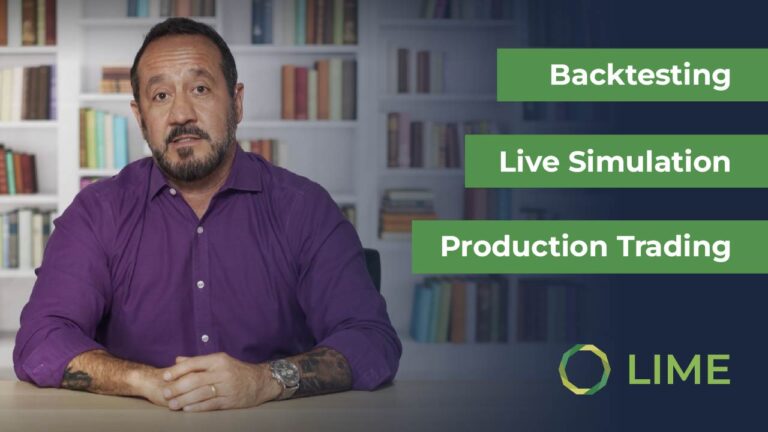Is the Market Scared?
One of the market’s main headscratchers: how can the same piece of news trigger opposite reactions? How can an announcement in employment numbers be interpreted as a positive sign of consumer strength, or, most likely, a negative sign of Fed hawkishness?
The answer is in the context. Over the past two decades, investors and strategists have widely adopted indicators that track the “mood” of the market— the likelihood that new data will be interpreted as good or bad. Quantifying the aggregate view of millions of investors is challenging, but, lucky for us, somebody already did the work!
A very simple “fear indicator” is the VIX. Although technically complex, it summarizes everything as a simple number that investors track without getting in the formulaic weeds. Generally, a low VIX (i.e., under 20) is usually associated with an optimistic market, whereas a higher VIX (i.e., over 20) is associated with a pessimistic market.
During 2022, the VIX has averaged 26.2, consistent with the dreadful year we’ve had, whereas, throughout the years 2010-2019 we saw a 16.9 VIX, in line with the decade-long rally. Dramatic spikes in the VIX were seen at the start of the COVID-19 pandemic and reached temporary highs at the start of the decade with the sovereign crisis in Europe.
A longer-term view of the economy and the markets– both bonds and equities– is reflected in the spread between the 2yr and 10yr Treasury notes and bonds. In a normal market, investors require a higher rate for lending money to the US government for 10yrs compared to only 2yrs. The difference between those two yields is the 2yr-to-10yr spread.
In good times, with solid and healthy growth in the economy– and thus higher future earnings’ estimates– the spread widens. The reasons for this expansion are as many as economists in Wall Street! There is a funds flow effect as investors dump long-term bonds to favor equities. Also, as the economy accelerates and the risk of overheating rises, long-term bond investors worry about future rate rises, pricing that in the 10yr yield.
On the other hand, as economists predict a slowdown, the spread narrows; we may even see negative numbers if the economy is expected to enter a recession. This is known as the “inverted yield curve.”
Fear-or-Greed Trading
Despite the VIX being a tool used mostly to monitor the market’s mood, investors can also get direct exposure in the ETF market. For investors that think the market is as fearful as it gets and expect a pullback in the VIX, the SVXY is a short-VIX fund. Despite a modest ~$300m market cap, the SVXY is relatively liquid with ~$100m traded daily. However, if investors remain bearish or want to hedge a long position in the market, the VIXY is a straightforward ETF that tracks the VIX dollar-per-dollar.
What could go wrong with this type of strategy?
The VIX and the 2yr-to-10yr spread are indicators of the market’s risk aversion or appetite more than direct investment strategies. Investors that trade the VIX– either long or short– are effectively trading in an indirect, highly complex measure of volatility in the options market with very limited visibility for most investors (nearly everybody except highly trained specialists).
© 2022 Securities are offered by Lime Trading Corp., member FINRA & SIPC, NFA, Lime Advisory Corp is an investment adviser registered with the SEC. and Lime FinTech is a technology business. Collectively known as “Lime Financial” or “Lime” provide various trading, investment advisory services, and technology solutions including web and mobile trading applications, to retail and institutional investors. All investing incurs risk, including but not limited to loss of principal. Further information may be found on our Disclosures Page.
Please read the Options Disclosure Document titled “Characteristics and Risks of Standardized Options” before trading options.
Options trading entails significant risk and is not appropriate for all investors. Certain options strategies carry additional risk and investors may lose 100% of funds invested in a short period of time. Investors should consult with a tax advisor as to how taxes may affect the outcome of any options strategy. Options trading privileges are subject to Lime Trading Corp. review and approval. Transaction costs may be significant in multi-leg option strategies, including spreads and straddles, as they involve multiple commission charges.
This material has been prepared for informational purposes only and is NOT intended to provide nor should it be relied on for tax, legal, or accounting advice. Please consult your own tax, legal, and accounting advisors before engaging in any securities transactions as each individual investment(s) may result in diverse/adverse tax implications that will affect the outcome of any investment strategy. No information presented herein should be considered an offer to buy or sell a particular type of security. This is not an offer or solicitation in any jurisdiction where we are not advertised to do business. Other fees, such as regulatory, service, or other fees, may apply. Please visit our Pricing Page for further information. Investments involve risk, past performance does not represent future results. Diversification may help spread risk but does not protect in a down market. You may lose all of your investment. Investors should evaluate their financial situation, investment objectives, and goals before investing. Substantial risks are involved with electronic trading. Day trading involves significant risk and is not suitable for all investors. Please see our Day Trading Risk Disclosure Statement for more detailed information. Trading on margin is not appropriate for every investor. Please see our Margin Disclosure Statement for information on risks. System response may vary due to multiple factors including but not limited to trading volumes, market conditions, system performance, and other factors. Access to electronic services may be limited or unavailable during periods of peak demand, market volatility, systems upgrades, maintenance, or for other reasons.
Exchange Traded Funds (ETFs) are subject to market risk, including the loss of principal. The value of any ETF and thus the portfolio that holds an ETF will fluctuate with the value of the underlying securities in the ETF reference basket. ETFs trade with the same brokerage commissions associated with buying and selling equities unless trading occurs in a fee-based account. ETFs often trade for less than their net asset value. Refer to Disclosure Statements | Lime Financial.





